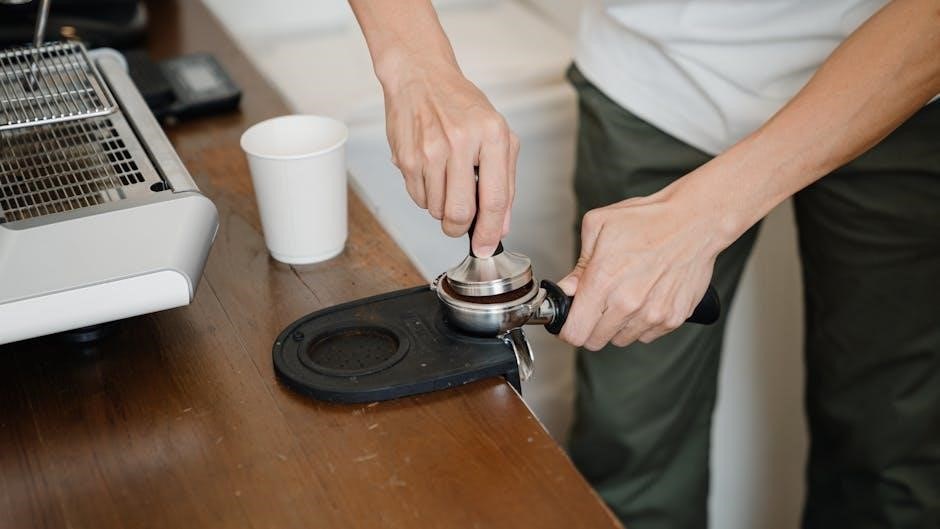Welcome to the Biamp TCM-XA Installation Manual‚ your comprehensive guide for installing and configuring the Parlé TCM-XA ceiling microphone system. This manual ensures proper setup and optimal performance‚ covering hardware requirements‚ software configuration‚ and troubleshooting tips for seamless integration into your AV system.
Overview of the TCM-XA Microphone System
The Biamp TCM-XA is a high-performance ceiling microphone system designed for professional audio and video conferencing applications. It features Beamtracking technology with four 90-degree zones‚ providing full 360-degree coverage for exceptional voice pickup. The system includes a plenum box with a built-in digital signal processing module and supports optional TCM-XEX microphones for expanded coverage. Compliant with UL-2043 and IEEE 802.3at Type 2 Class 4 standards‚ the TCM-XA ensures reliability and safety in plenum spaces. It integrates seamlessly with Tesira systems for advanced audio processing and control.
Importance of Proper Installation
Proper installation of the Biamp TCM-XA microphone system is crucial for achieving optimal audio quality‚ reliable operation‚ and compliance with safety standards. Incorrect installation can lead to poor sound performance‚ echo‚ or feedback‚ compromising the overall experience. It ensures the system functions as intended‚ maintains network stability‚ and prevents potential damage. Proper installation also guarantees compliance with certifications like UL-2043 and IEEE 802.3at‚ ensuring safety in plenum spaces. Following the manual’s guidelines is essential for a seamless and professional setup‚ avoiding costly rework and ensuring long-term system reliability.

System Requirements and Compatibility
The Biamp TCM-XA requires a compatible network infrastructure‚ PoE support‚ and updated software for seamless integration‚ ensuring optimal performance and compatibility with existing AV systems.
Hardware Requirements for Installation
The Biamp TCM-XA requires PoE+ (Power over Ethernet Plus) for operation‚ a Cat 5e or higher Ethernet cable‚ and a PoE-capable network switch. Ensure the microphone is connected to a compatible network infrastructure to support its advanced features and ensure reliable performance during installation. Proper hardware setup is critical for optimal functionality and to avoid connectivity issues. Always verify that the network switch meets the PoE+ standards to power the device effectively. Adherence to these hardware requirements ensures seamless integration and operation of the TCM-XA microphone system.
Software Compatibility and Setup
The Biamp TCM-XA integrates seamlessly with Biamp’s Tesira software‚ version 3.1 or later‚ for configuration and control; Ensure the software is installed on a compatible Windows or macOS system for optimal performance. During setup‚ the microphone must be discovered on the network and configured within the Tesira environment. Firmware updates should be checked and applied to maintain functionality. Proper software configuration ensures the TCM-XA operates with advanced features like Beamtracking and audio processing. Follow the installation guide for step-by-step software setup instructions to guarantee a smooth and efficient process.
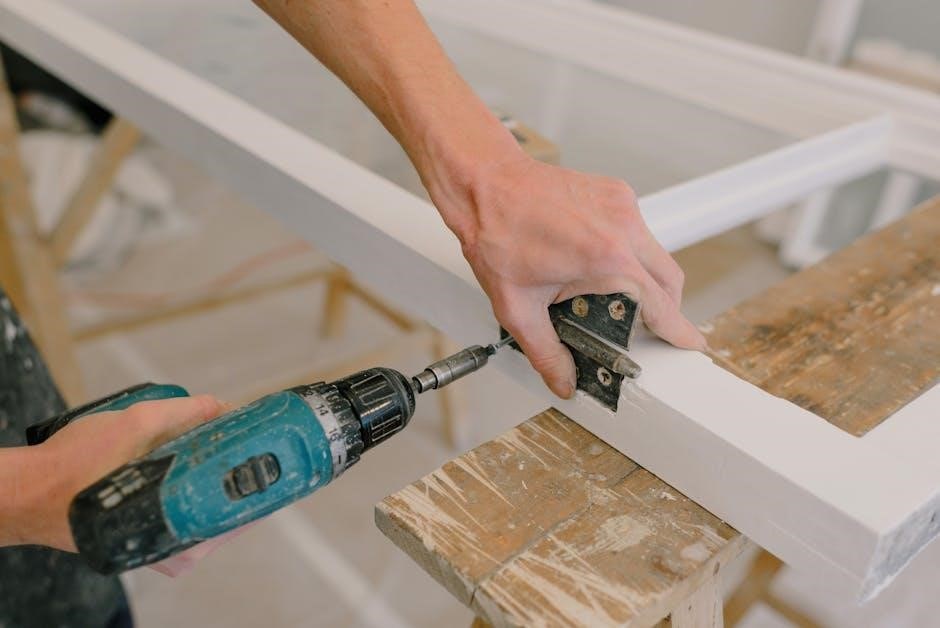
Mounting and Installation Options
The TCM-XA offers flexible mounting and installation options‚ including ceiling tile grid‚ plenum box‚ and corner configurations‚ ensuring adaptability to various environments and installation needs.
Ceiling Tile Grid Installation
The TCM-XA can be installed in standard ceiling tile grids‚ typically 2×2 feet‚ using the provided C-ring and tile bridge hardware. Ensure the ceiling tile is sturdy and secure. Place the microphone in the grid‚ connect the cabling through the plenum box‚ and tighten the C-ring to hold it firmly. Verify the installation area is clean and free from debris for optimal performance and aesthetic integration.
Plenum Box Mounting Configurations
The TCM-XA microphone supports plenum box mounting‚ ensuring secure installation in plenum spaces. Use the provided mounting hardware to attach the microphone to the plenum box. Ensure the box is properly sized and fitted to accommodate the microphone’s dimensions. Route network and power cables through the plenum box‚ securing them with cable ties. Verify all connections are tight and the system is UL-2043 compliant for safe operation in plenum environments. This configuration ensures reliable performance and adherence to safety standards.
Corner Installation Option
The TCM-XA microphone can be installed in a corner configuration‚ providing flexibility for unique spaces. Use the supplied hardware to secure the microphone at a 90-degree angle where walls meet. Adjust the microphone’s angle to optimize pickup patterns and ensure proper fit. Ensure the corner bracket is tightly fastened to prevent movement. This configuration maintains the microphone’s performance while blending seamlessly into the environment. Follow all installation guidelines to ensure reliable operation and adherence to safety standards.

Power and Network Requirements
The TCM-XA requires Power over Ethernet (PoE) for operation‚ ensuring both power and data transmission via a single Ethernet cable. A PoE-enabled switch is necessary.
Power over Ethernet (PoE) Requirements
The Biamp TCM-XA requires Power over Ethernet (PoE) for operation‚ delivering both power and data through a single Ethernet cable. It must be connected to a PoE-enabled switch or injector that supports IEEE 802.3at Type 2 Class 4 standards‚ ensuring sufficient power delivery. Use a Category 5e or higher Ethernet cable to maintain reliable connectivity. Avoid using non-PoE switches without a compatible PoE injector‚ as this could result in malfunction or damage. Proper PoE configuration simplifies installation and ensures optimal system performance.
Network Configuration and Connectivity
Ensure the Biamp TCM-XA is connected to a network with DHCP enabled for automatic IP addressing. Use a high-quality Category 5e or higher Ethernet cable to connect the device to a PoE-capable switch. Configure VLAN settings if required for network segmentation. Enable QoS (Quality of Service) to prioritize audio traffic‚ minimizing latency and ensuring reliable communication. Verify network connectivity by pinging the device or checking the LED status. Proper network configuration is critical for seamless operation and integration with other Biamp devices in the system.

Accessories and Additional Components
Accessories include mounting hardware and seismic cables for secure installation. Optional TCM-XEX microphone integration enhances system functionality and audio performance. These components ensure stability and optimal operation.
Mounting Hardware and Seismic Cable
The Biamp TCM-XA system includes mounting hardware designed for secure and flexible installation. Seismic cables ensure stability in vibration-prone environments‚ meeting building safety standards. These components are essential for maintaining system integrity and reliability‚ ensuring optimal performance under various conditions. Proper installation with provided hardware guarantees durability and compliance with installation requirements. Always use approved accessories to avoid compromising the system’s functionality and safety. These elements are critical for achieving a professional and reliable setup.
Optional TCM-XEX Microphone Integration
The TCM-XEX microphone can be integrated with the TCM-XA system to enhance audio capabilities. This optional accessory provides additional flexibility for installations requiring expanded coverage or specialized audio capture. The TCM-XEX is designed to work seamlessly with the TCM-XA‚ offering advanced beamtracking technology for improved sound quality. Proper integration ensures optimal performance and compatibility. Follow the manual’s guidelines for connecting and configuring the TCM-XEX to maintain system integrity and functionality. This integration is ideal for environments needing enhanced audio solutions without compromising the primary system’s operation.
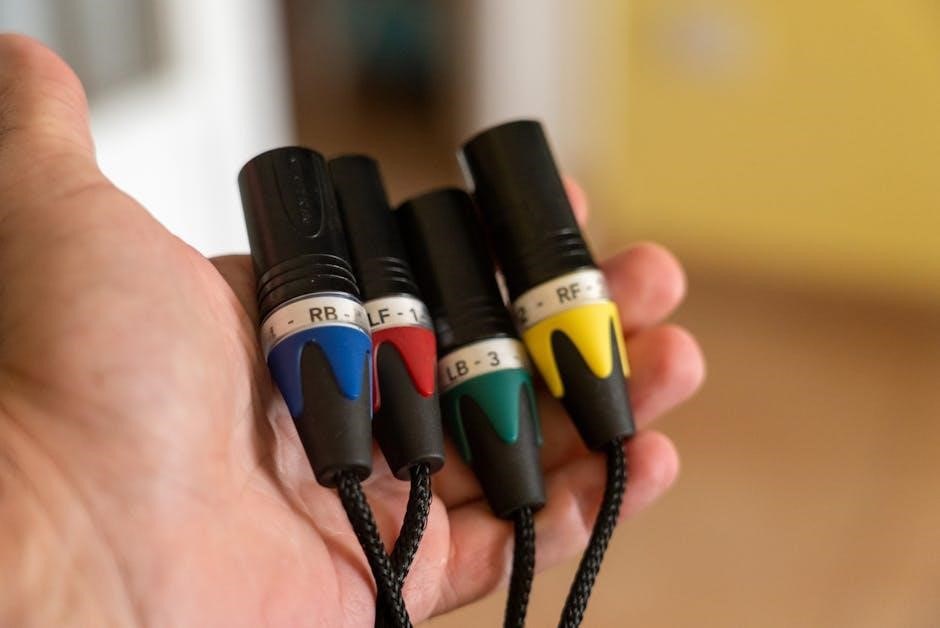
Troubleshooting Common Issues
Troubleshooting common issues ensures optimal performance and functionality. Refer to the manual for detailed solutions‚ including LED diagnostics and network connectivity checks.
LED Indicator Status and Diagnostics
The LED indicator on the Biamp TCM-XA provides critical status information. A steady green light indicates normal operation‚ while amber signifies a warning‚ such as reduced functionality. A red light signals a critical issue‚ like no power or firmware failure. Flashing patterns indicate specific faults‚ such as network connectivity problems or overheating. Refer to the manual for a detailed guide to LED statuses and corresponding troubleshooting steps to resolve issues promptly and effectively.
Resolving Network and Power Issues
Troubleshooting network and power issues with the Biamp TCM-XA involves checking connections and configurations. Ensure the device is powered via PoE from a compatible switch or injector. Verify network cables are securely connected and free from damage; Restart the device and switch to reset the connection. Check IP settings and subnet masks to confirm proper network configuration. If issues persist‚ consult the Tesira software for error messages or firmware updates. Contact Biamp support for advanced diagnostics or hardware replacement if necessary.
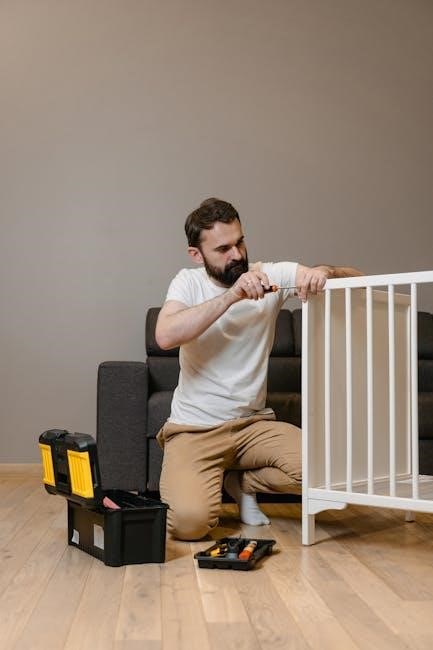
Compliance and Certifications
The Biamp TCM-XA adheres to industry standards and holds necessary certifications‚ ensuring compliance with safety and performance regulations for reliable professional operation in different environments.
UL-2043 Compliance for Plenum Spaces
The Biamp TCM-XA is UL-2043 certified for installation in plenum spaces‚ ensuring compliance with fire safety standards for air-handling areas. This certification verifies that the device meets requirements for low smoke and flame spread‚ critical for maintaining occupant safety in case of fire. Compliance with UL-2043 is essential for installations in plenum environments‚ aligning with local building codes and regulations. This designation underscores Biamp’s commitment to providing safe and reliable solutions for professional audio installations in sensitive spaces.
IEEE 802.3at Type 2 Class 4 Certification
The Biamp TCM-XA is certified to IEEE 802.3at Type 2 Class 4 standards‚ ensuring reliable Power over Ethernet (PoE) performance. This certification guarantees up to 30 watts of power delivery‚ sufficient for the microphone’s operation. It also ensures backward compatibility with older PoE standards‚ offering flexibility in network setups. This compliance simplifies installation by eliminating the need for a separate power supply‚ reducing clutter and installation costs. The certification further assures safe and efficient power delivery‚ making it ideal for demanding audio applications in professional environments.

Software Setup and Configuration
The Biamp TCM-XA requires software setup for optimal functionality. Use Tesira software to program devices‚ configure settings‚ and integrate with other systems seamlessly for enhanced performance and control.
Using Tesira Software for Device Programming
Tesira software is essential for programming and configuring the Biamp TCM-XA microphone. It allows users to set up audio parameters‚ configure network settings‚ and integrate with other Tesira devices seamlessly. The software offers a user-friendly interface for real-time adjustments and customization‚ enabling enhanced control and monitoring. Regular updates ensure compatibility and optimal performance. Proper configuration using Tesira is crucial for seamless integration and functionality within audio systems‚ providing a robust and reliable setup for various applications.
Configuring Beamtracking Technology
Beamtracking Technology in the Biamp TCM-XA microphone system dynamically adjusts the pickup pattern based on the speaker’s location‚ ensuring consistent audio quality. This advanced feature uses a microphone array to track the voice source and adapt the beam automatically. It optimizes speech intelligibility and minimizes background noise. Configuration via Tesira software allows customization of tracking sensitivity and zone settings. Beamtracking supports multiple speakers and varying room layouts‚ making it ideal for dynamic environments. Proper setup ensures seamless audio performance and enhanced collaboration experiences.
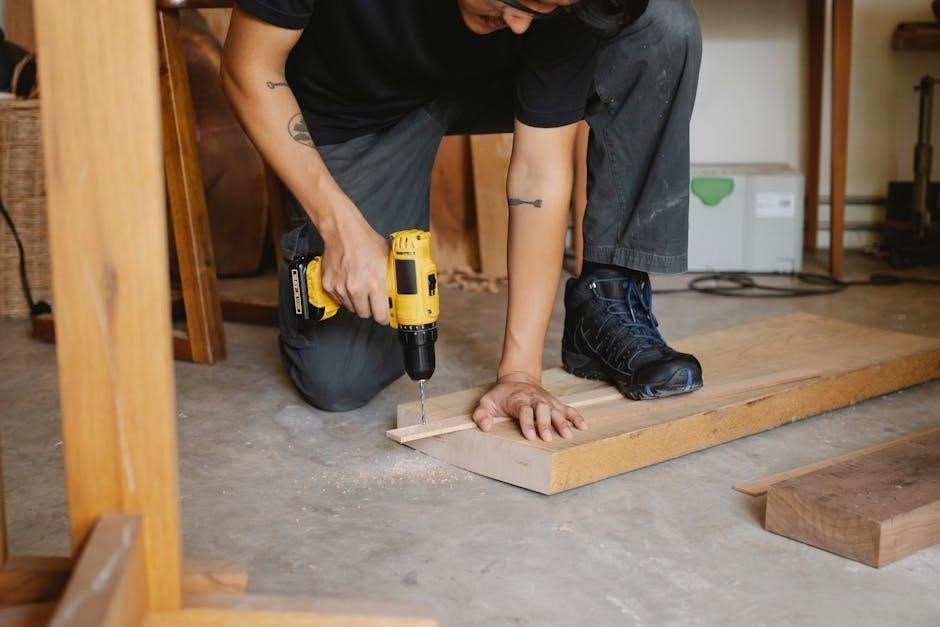
Safety Precautions and Best Practices
Always follow safety guidelines when handling electronic equipment to prevent damage or injury. Ensure proper grounding and avoid static discharge during installation. Use recommended tools and wear protective gear.
Maintain a clean and stable work environment to prevent accidents. Adhere to local regulations and manufacturer instructions for optimal safety and system performance.
Handling and Installing the Microphone
Handle the TCM-XA microphone with care to avoid damage. Ensure proper grounding to prevent static discharge‚ which can harm the device. When installing‚ use the provided mounting hardware and follow the manual’s torque specifications.
Avoid over-tightening screws‚ as this may damage the housing or internal components. Use a soft‚ dry cloth to clean the grille and microphone capsule to maintain performance and appearance.
Always disconnect power before servicing or installing the device to ensure safety and prevent electrical shock.
Avoiding Environmental Hazards
To ensure reliable operation‚ install the TCM-XA in environments with stable temperatures (0°C to 35°C) and humidity levels below 90%. Avoid exposure to direct sunlight‚ moisture‚ or corrosive substances‚ as these can degrade performance.
Keep the microphone away from sources of mechanical stress‚ such as vibrations or impacts. Do not install in areas with extreme dust or particle contamination. For outdoor use‚ ensure weather-resistant accessories are employed to protect the device.
Following these guidelines helps maintain system reliability and compliance with environmental specifications.

Downloading and Referencing the Manual
Visit the official Biamp website to download the latest TCM-XA installation manual. Ensure you reference it during installation for accurate guidance and compliance with specifications.
Official Biamp TCM-XA Manual Download
Access the official Biamp TCM-XA installation manual directly from Biamp’s website. Navigate to the support section‚ where you’ll find downloadable PDF versions tailored for your specific product. Ensure you select the correct manual version corresponding to your TCM-XA model to guarantee compatibility and accurate installation guidance. The manual includes detailed instructions‚ diagrams‚ and compliance information to help you install and configure the system effectively. Regularly check for updates‚ as Biamp may release revised versions with improved instructions or new features.
Additional Resources and Guides
Beyond the manual‚ Biamp offers supplementary resources to assist with TCM-XA installation. Technical notes‚ FAQs‚ and troubleshooting guides are available on Biamp’s support website. Video tutorials and installation checklists provide visual and step-by-step guidance. These resources address common questions and complex scenarios‚ ensuring a smoother setup process. For advanced configurations‚ Biamp’s customer support team is available to provide personalized assistance. Explore these additional materials to maximize your understanding and ensure a successful installation.
Thank you for following the Biamp TCM-XA installation manual. Proper setup ensures optimal performance. Refer to provided resources for further guidance or contact Biamp support for assistance.
Final Checks and System Testing
After completing the installation‚ perform final checks to ensure all components function correctly. Verify microphone connectivity‚ power supply‚ and network configuration. Conduct audio tests to confirm clear sound quality and proper beamtracking performance. Check LED indicators for normal operation and review system logs for any errors. Test all configured settings in Tesira software to ensure seamless integration. Finally‚ simulate real-world scenarios to validate the system’s responsiveness and reliability under various conditions. A thorough system test guarantees optimal performance and user satisfaction.
- Inspect all physical connections for security.
- Verify network and power stability.
- Test audio quality and functionality.
- Validate software configurations.
- Perform comprehensive system testing.
Ensuring Optimal Performance
To maintain peak performance‚ regularly inspect and clean the microphone grille to prevent debris buildup; Ensure all settings in Tesira software are optimized for the specific acoustic environment. Perform periodic firmware updates to access the latest features and improvements. Verify that the system operates within the recommended temperature and humidity ranges. Regularly check for loose connections and ensure stable power and network connectivity. These practices help maintain consistent audio quality and system reliability over time.
- Update firmware regularly for improved functionality.
- Optimize Tesira settings for the environment.
- Inspect and clean the microphone grille.
- Monitor environmental conditions.
- Check connections for stability.
